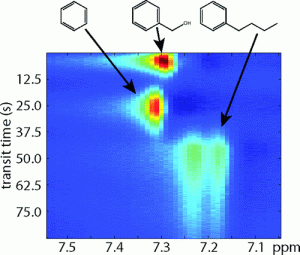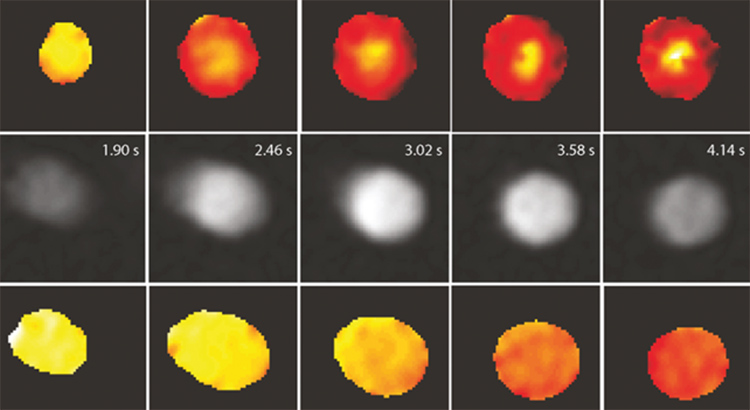During the time I spent in Berkeley I had the honor to work on the beginning of the project leading to the portable system for highly sensitive multi-dimensional chemical analysis. This work included hyphenation of NMR with liquid chromatography separation using organic polymer monoliths.

I have to admit, it was my first touch of NMR ever. I knew the theory, principle and technique, but I had never worked with it. Fortunately, we were four of us, Tom and Nick as NMR guys and Stuart and me responsible for chromatography. We have used hypercrosslinked monolithic columns which already proved to be suitable for fast separation of small molecules.
Read the press release
Since yesterday, I wanted to describe the whole project with all the background, theory, results and so on. But there are people who did it before me and in much better shape than I can ever do. So if you are interested in this very nice topic, you can read article about Application of NMR/MRI to microfluidic chromatography published at the Berkeley Lab website. It describes rationale and inspiration behind the work, as well as achieved results and future plans. Moreover, you might get more information in the paper published in Anal. Chem.
LC-NMR hyphenation
Although there is (almost) nothing to add, I would like to share my view and experience I got working on this topic. First of all, capillary liquid chromatography and NMR are quite contradictory techniques. To get better results you need low injection volume in LC, but then you have no signal (low sensitivity) in NMR. The same applies with speed – you get higher efficiency at lower flow-rates of mobile phase (LC) but you are loosing signals in NMR with their slow transfer. Last but not least, all metallic parts have to be in certain distance from the NMR magnet.
Monolithic capillary column has been placed inside the magnet and connect with injector via a long fused silica capillary. First, we have started with 100 μm I.D. monolithic column and splitter who divided the flow from the pump. Later, we increased internal diameter of our monolithic column up to 530 μm which allowed increase in signal and avoid using splitter. Thus, we could connect the column with injector via 250 cm long capillary (50 μm I.D.).
We had to inject mixture of pure compounds (benzyl alcohol, benzene and butylbenzene) to be able to get any signal. The separation showed in the figure is quite fast and if there is no tailing of butylbenzene peaks it would be possible to separate these test compounds in less then 60 s.
Thanks guys
Thanks to this project I had a nice opportunity to learn something new and work with techniques and their hyphenation which open door to a future portable system for very sensitive chemical analysis. No surprise that at the end I would like to thank my co-workers Tom Teisseyre, Nick Halpern-Manners and Stuart Chambers. It was my pleasure to work with you, guys!
